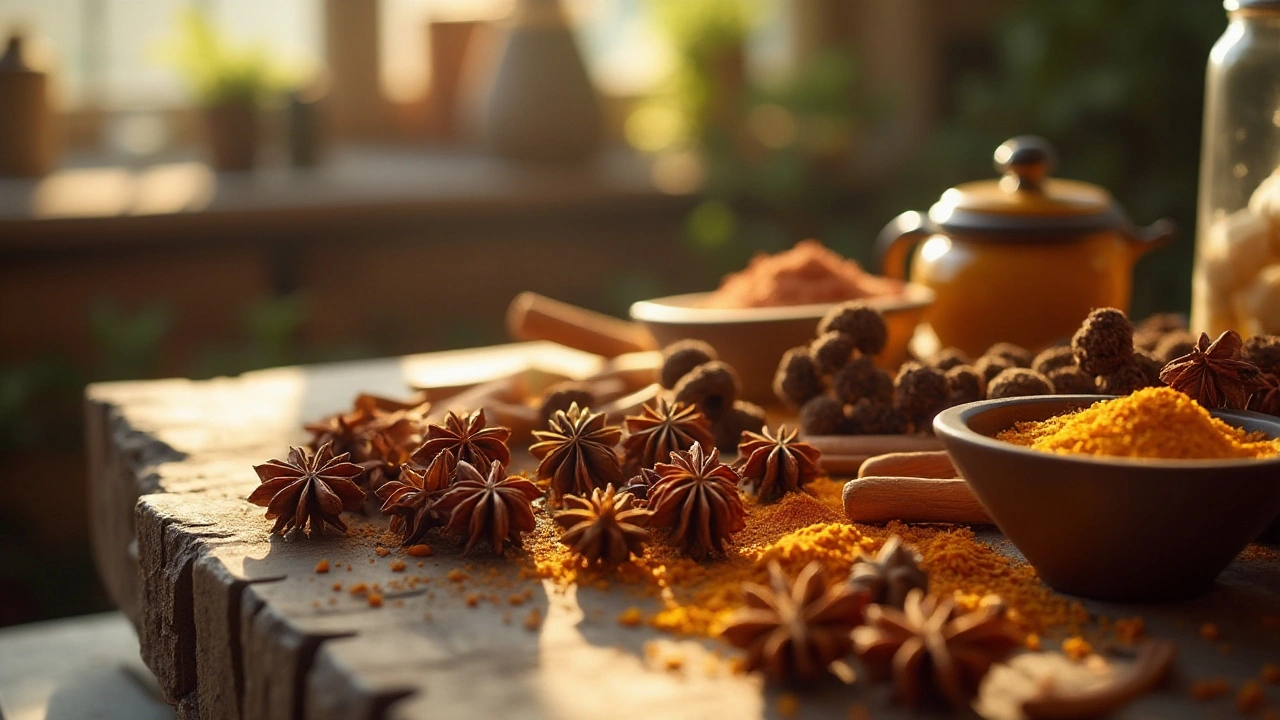Star Anise benefits: what it does and how to use it
Star anise is the star-shaped spice you often smell in broths and baking. It tastes like licorice and brings more than flavor. People use it for digestion, a warming tea, and as a natural way to add aroma to recipes. It also contains active compounds like anethole and shikimic acid, which researchers have studied for antibacterial and antioxidant effects.
If you want a simple benefit today, try a cup of star anise tea after a heavy meal. It eases the sense of fullness for many people and is a pleasant, caffeine-free alternative to mint or ginger.
How to use star anise safely
Cooking: Add one or two whole pods to soups, stews, or poaching liquid. Remove the pods before serving. Ground star anise works in baking and spice blends—use it sparingly because the flavor is strong.
Tea: Steep 1 whole pod or 1/2 teaspoon of crushed seeds in hot water for 5–10 minutes. You can mix it with cinnamon, ginger or black tea. Don’t give star anise tea to infants or very young children.
Essential oil: This is very concentrated. Always dilute 1%–2% in a carrier oil for topical use and avoid swallowing unless under professional guidance. Do a patch test first to check for skin sensitivity.
What the evidence and safety notes say
Lab studies show that star anise has antioxidant and antibacterial properties. It also contains shikimic acid, a compound used in the manufacture of some antiviral drugs. That doesn't mean star anise treats viral infections, but it helps explain why scientists study the plant.
Safety matters: not all "star anise" you find is safe to eat. Japanese star anise (Illicium anisatum) is toxic and should never be consumed. Buy culinary-grade Chinese star anise (Illicium verum) from reputable sellers. There have been rare reports of seizures in infants after drinking teas contaminated with toxic species, so avoid giving star anise tea to babies and pregnant or breastfeeding women without medical advice.
Also be careful if you take medication. Star anise can interact with some drugs because of its active compounds. If you’re on prescription medicine, especially blood thinners or drugs processed by the liver, check with a pharmacist or doctor before using star anise regularly.
Bottom line: star anise is a tasty spice with useful digestive and aromatic benefits when used correctly. Keep portions small, buy the right type, and skip it for infants or when unsure about interactions. Try it in a simple tea or add a pod to your next simmered dish—small steps are the best way to test if it works for you.
